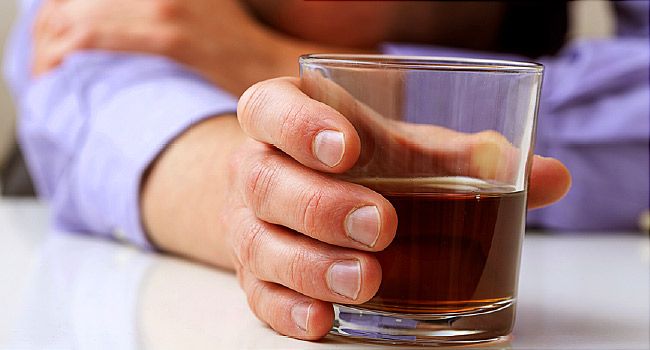
The rate of one type of risky drinking -- binge drinking -- for example, has increased for all adults aged 30 and up over the last 10 years.
From: https://www.webmd.com/mental-health/addiction/news/20180430/are-you-a-risky-drinker?src=RSS_PUBLIC
Find information about health and nutrition from various and reliable sources all over the world, in just one site. World's latest headlines all in one place.

The rate of one type of risky drinking -- binge drinking -- for example, has increased for all adults aged 30 and up over the last 10 years.

You quit smoking. Now it’s time to pay it forward and help someone else who wants to kick the habit. Do you know what will really help them, and what won’t?
The investigators found that the disease advanced more quickly among those who were very obese. This was true regardless of the level of inflammation in their joints.
Follow me on Twitter @RobShmerling
Fibromyalgia is a common condition that causes chronic body-wide pain and affects millions of people. The cause is unknown, and medications approved to treat it often aren’t effective, cause side effects, or both. To say we need better treatments for fibromyalgia is an understatement.
Non-medication treatment of fibromyalgia — especially exercise — is an essential part of treatment. But the last thing people with this condition want to do is exercise! Their pain and fatigue, so typical of this disease, make physical activity more wishful thinking than reality for most fibromyalgia sufferers. Even so, studies suggest that as long as people start “low and slow” (exercising at low intensity and for short duration, and very gradually increasing both), physical activity can be tolerated and even enjoyed.
A new study compared two types of physical activity among people with fibromyalgia: aerobic exercise (such as brisk walking, as commonly recommended) and tai chi, an ancient form of martial arts often practiced for health benefits. Past studies have demonstrated that tai chi can be effective for people with fibromyalgia.
Researchers enrolled 226 adults with fibromyalgia and randomly assigned 151 to learn and practice tai chi (once or twice a week for 12 or 24 weeks), while 75 were assigned to participate in standard “moderate intensity” aerobic exercise (twice a week for six months, with an aim of raising the heart rate during exercise to an aerobic range). Study subjects were representative of “real world” patients who varied in age, had other health problems, and took a number of medications.
Compared with aerobic exercise, study participants assigned to the tai chi groups:
Both groups reduced their use of pain relievers to a similar extent. And no serious injuries or side effects of the treatments were reported.
As is true for most treatments, there is not a single best option in all circumstances. It may not work well for those who don’t like tai chi (or don’t give it a chance), or feel they cannot participate due to poor balance, weakness, or other health problems.
In addition, the study itself is not the last word on which activities are best for people with fibromyalgia. Not everyone will have access to high-quality tai chi instructors (though in this study, results were consistent across three instructors). Skeptics will point out that since study subjects knew which treatment they were getting, the placebo effect could account for the findings. And, of course, there are countless other exercise programs that were not included in this study.
This new research suggests that instead of current recommendations to get aerobic exercise (as with taking brisk walks), tai chi might be just as good or better for many people with fibromyalgia.
In the near future, it’s likely that we’ll have better ways to diagnose and treat fibromyalgia. In addition, a better understanding of why it develops in the first place could lead to preventive approaches. Until then, I’ll keep telling my patients what I’ve been telling them for years: when fibromyalgia gets better, it’s usually because of something the patient is doing, not because of a medication I prescribed. Being physically active does seem to be a particularly necessary part of the approach. Based on the results of this latest research, tai chi may be a good place to start.
The post Aerobic exercise or tai chi for fibromyalgia–which is better? appeared first on Harvard Health Blog.
The key factors include the usual suspects: not smoking; eating healthy; exercising regularly; maintaining a normal weight; and drinking only in moderation.